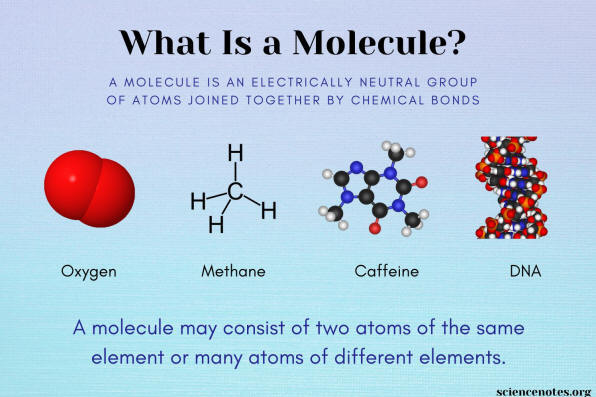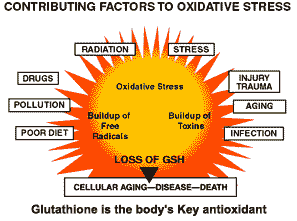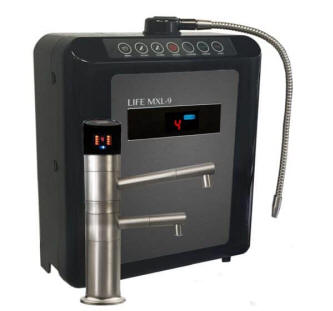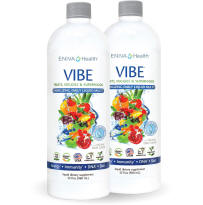Anti-Oxidants... What Are they? -
Every single one of our trillions of cells suffers about
10,000 free radical hits daily!
-
- Bruce Ames, Ph.D. at University of California,
Berkeley estimates that
(Ames, 1993)
-
You may have heard about
the health benefits of antioxidants, but do you know
what an antioxidant is -- and how they actually work?
The simple answer is that
antioxidants are substances that protect our cells from
oxidation (by free radicals).
Antioxidants are dietary
substances including some nutrients such as beta
carotene, vitamins C and E and selenium, that can
prevent damage to your body cells or repair damage
that has been done. Another,
glutathione (the "master antioxidant"), is
manufactured by our own bodies.
Antioxidants work by
significantly slowing or preventing the oxidative -- or
damage from oxygen -- process caused by free radicals
that can lead to cell dysfunction and the onset of
problems like heart disease and diabetes. Antioxidants
also improve immune function and perhaps lower your risk
for infection and cancer.
Although oxidation
reactions are crucial for life, they can also be
damaging; hence,
plants and
animals maintain complex systems of
multiple types of antioxidants, such as glutathione,
vitamin C, and
vitamin E as well as
enzymes such as
catalase,
superoxide dismutase and various
peroxidases. Low levels of
antioxidants, or
inhibition of the antioxidant enzymes,
causes
oxidative stress and may damage or
kill cells.
In your body, the
antioxidant process is similar to stopping an apple
from browning. Once you cut an apple, it begins to
brown, but if you dip it in orange juice, which
contains vitamin C, it stays white.
A little Chemistry
Let's look at what
free radicals are. Molecules are composed of atoms
bonded together, via the sharing of electrons.
Generally, atoms exist in pairs, with each electron
of the pair having an opposite spin to the other.
When a molecule is split, two things can happen.
First, the electrons can stay together. When this
happens, we say the molecule has ionized. For
example, table salt, which is Sodium Chloride (NaCl),
ionizes into two charged ions, specifically a sodium
ion and a chloride ion. In this case, the Chloride
received the electron pair, and the Sodium lost it.
The other thing that can happen is that the electron
pair is split. This leaves a highly reactive atom
(a free radical), seeking to steal an electron,
which sets up a domino effect of electron stealing.

Antioxidants work by offering easy electron
targets for free radicals.

Each time you are
confronted by the threats in the outer circle of the
diagram free radicals are released. The natural
reserve of glutathione in the body breaks down under
the assault. The effects of oxidative stress are so
critical in fact that a new field of medical science
has emerged, called 'Free Radical Biology' which
studies the long list of diseases caused by it.
Today it is known that antioxidants help diminish
cell damage, slows the harmful effects of aging and
lessens the threat of disease. Oxidative stress can
be minimized by raising intracellular GSH levels.
If the free radical is
not neutralized by an antioxidant it can wreak all
sorts of havoc in our bodies. Current research, for
example, is pointing to the fact that it is not only
the presence of fat in our bodies that leads to
plaque formation on our arteries, but the oxidation
of fat by free radicals. With cancer, the problem
starts when free radicals chip away at the DNA of
our cells, eventually causing mutations that lead to
malignancies.
The antioxidants
provided by vitamins work because they can
donate electrons to free radicals, thus
neutralizing them. However, this makes the
vitamin molecule unstable, and now it needs an
electron. This is sort of like passing a very
hot potato from person to person until someone
finds a place to lay it down. In our bodies,
that place is glutathione.
The
chemical equation gets fairly technical, but
in the end glutathione donates an electron
and becomes a stable molecule known as GSH.
Glutathione can then be regenerated via an
enzymatic pathway that involves lipoic acid. The
details of the chemistry involved is beyond the
scope of this page, but is well established in
the scientific literature. Also well established
is the fact that the glutathione antioxidant
system is the most important system in our
bodies when it comes to the destruction of
reactive oxygen compounds (very potent free
radicals). (Meister, 1994)
Glutathione is often referred to as GSH.
GSH's metabolic
functions include:
|
•
Enhancement of Immune Function | |
•
Elimination of Toxins | |
•
Elimination of Carcinogens | |
•
Antioxidant Cell Protection | |
•
Protection against Ionizing
Radiation
| |
•
DNA Synthesis and Repair | |
•
Protein Synthesis
| |
•
Prostaglandin Synthesis
| |
•
Leukotriene Synthesis
| |
•
Amino Acid Transport
| |
•
Amino Acid Transport
| |
•
Enzyme Activity and Regulation |
Now you
know... antioxidants are important to a
healthy lifestyle and LONG life!
Here's some our favorite antioxidants sources. |
-
Alkaline pH
Water
-
The Most Powerful Water in Existence!
.
-
-
 Ionized
pH
water is.. Ionized
pH
water is..
-
highly alkaline (or acidic)
-
ionized
-
anti-oxidant electron-rich
-
restructured
-
hexagonal microclustered
-
active-hydrogen-saturated
-
oxidation-reduced
-
powerful living water!
This amazing
water Flushes Toxins and
Neutralizes Acid throughout your ENTIRE body.
 |  Glutathione Glutathione
Glutathione is your body's master antioxidant and one of
the most important cleansing and healing agents.
Glutathione blocks free radical damage and
helps to recycle Vitamins E and C, therefore plays a key
role in their function. Because
Glutathione exists within the cells, it is in a
prime position to neutralize free radicals. The highest
concentration of glutathione is found in the liver which
is the principal organ involved in the detoxification
and elimination of toxic materials.
Glutathione may also help with detoxification
by binding to toxins such as heavy metals, solvents and
pesticides, allowing them to be excreted in urine or
bile.
 | |
 ENIVA'S
VIBE™
is the single most effective nutritional supplement you
can find, period. ENIVA'S
VIBE™
is the single most effective nutritional supplement you
can find, period.
The Highest ORAC
Score Available!
Proprietary blend of high potency anti-oxidants from
fruits, vegetables, and various botanicals. Provides
an exceptionally high Oxygen Radical Absorbance Capacity
(ORAC) value--an indicator of anti-aging strength.
Recently acknowledged by the medical community,
VIBE has been added to the "PDR".
(Physicians Desk Reference) This "all-in-one" nutritional supplement provides a
convenient, economical, and powerful way to receive
complete and balanced nutrition for vibrant living.
A more complete combination of healthful ingredients in
liquid design can't be found. This ONE product
replaces all the rest.
 |
.png)

|